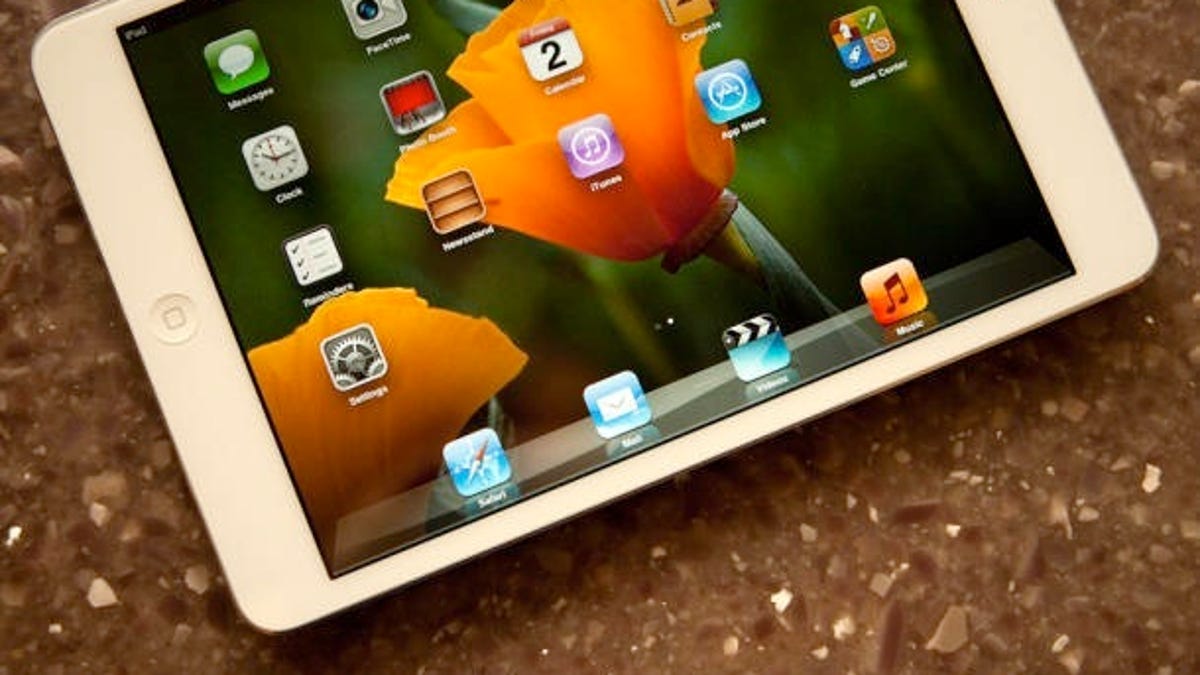Reconciling the iPad Mini with Apple's Retina obsession
Apple created the Retina display brand as a key selling point for its leading products. Is the iPad Mini an exception? Or is it only a matter of time before it goes Retina too.

The iPad Mini is an exception to Apple's Retina obsession. Will that change?
David Hsieh, an analyst at DisplaySearch, tried to answer that question in a research note today, saying that Apple has become a victim of its own marketing success.
By creating a class of super-high-resolution Retina products -- including the iPad, iPod, iPhone, and MacBook Pro -- Apple has sparked an industry-wide scramble to match or exceed the resolution of its displays.
Apple created the term "Retina display" not just as a marketing phrase, but to educate end users about high resolution. Apple has been leading the trend in displays with high pixels per inch (ppi, the measurement of resolution), especially with the launch of iPhone 4, the first smart phone with a resolution of more than 300 ppi, and the new iPad, the first tablet PC with over 200 ppi.
However, other smart device makers, including Samsung, HTC, Google, Amazon, Sony, Lenovo, and Asus are closely following Apple, and in some cases have introduced products with higher resolutions, such as Google's Nexus 10 tablet PC, with a 10.1" 2560×1600 display at 298 ppi, and coming smart phones using 5.0" 1920×1080 displays at 490 ppi.
So, in order to stay ahead, or at least maintain parity, what can Apple do? Getting to 300-plus pixels per inch in a 7.9-inch ultrathin tablet like the iPad Mini isn't something that will necessarily happen overnight. For example a rumored 2,048x1,536 pixel density iPad Mini would translate to a PPI of 324.
And that calls for new technologies like IGZO. Because of smaller transistors and circuit elements, more light can pass through an IGZO display, reducing the number of backlights needed compared to conventional technologies, resulting in a thinner display assembly, among other benefits.
Exceeding 300 ppi in a tablet PC display may require new technologies, particularly oxide TFT (such as IGZO) because of the high electron mobility required to drive small pixels at low power consumption. Sharp was the first to mass produce oxide TFT panels, but Samsung, LG Display, AUO and Chimei are all working on oxide TFT as well, for the sake of readiness for Apple's requirement. In addition, high pixel densities will increase backlight power consumption, and thermal dissipation of the LED is also a concern. All of these are challenges for the panel makers.
DisplaySearch's Richard Shim has told CNET that Apple is partnering with display makers LGD and AUO on the iPad Mini. And the iPad Mini rumor yesterday, cited above, pointed to AUO as trying to develop a display for the next iPad Mini that yields a ppi of 324.
Other analysts agree about the expected move to Retina on the next Mini. "I think that's highly likely for the progression of that product," Vinita Jakhanwal, a display analyst IHS iSuppli, told CNET. "And also the fact that they have a whole ecosystem of apps that have been developed for the [Retina] iPad 3 and iPad 4," she added.
"And also they would want uniformity across the product lines. And also consider that [Retina] is something that they have invested a lot money into marketing," Jakhanwal said.
So, Apple may be trying to go down the Retina path for the Mini. And, in the coming months, the supply chain of Apple-related manufacturers in Asia will likely have more to tell us about whether Apple gets there.

